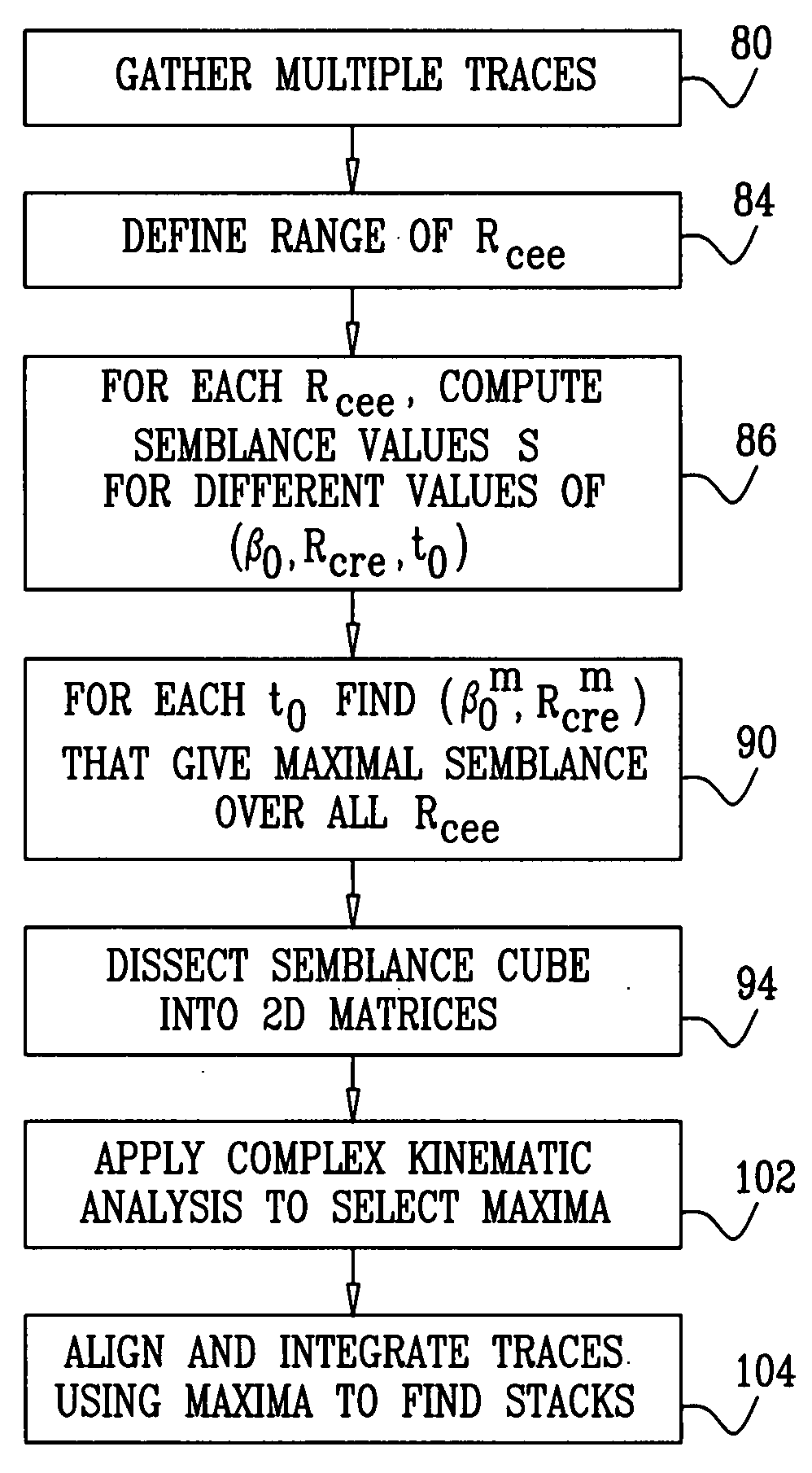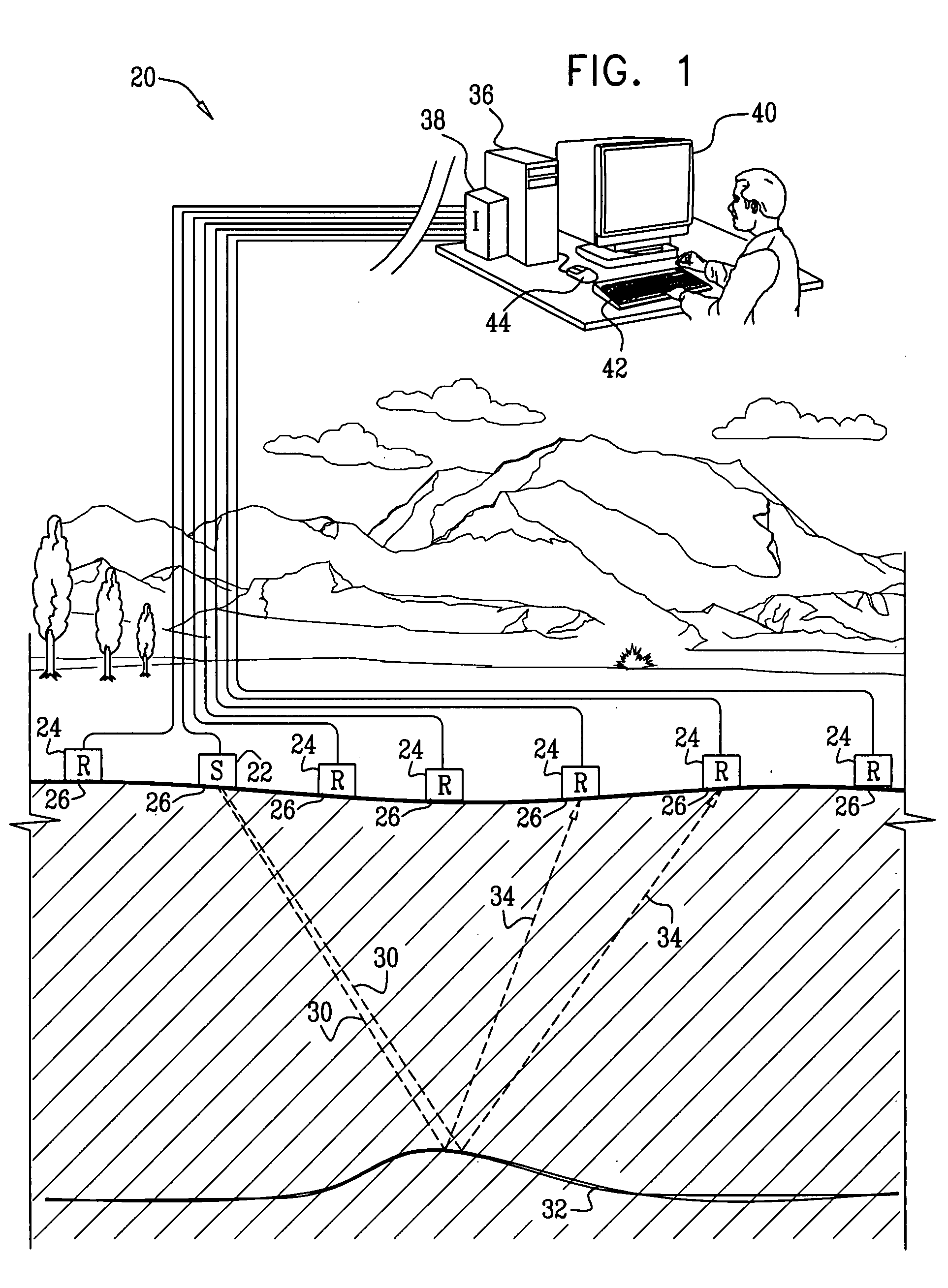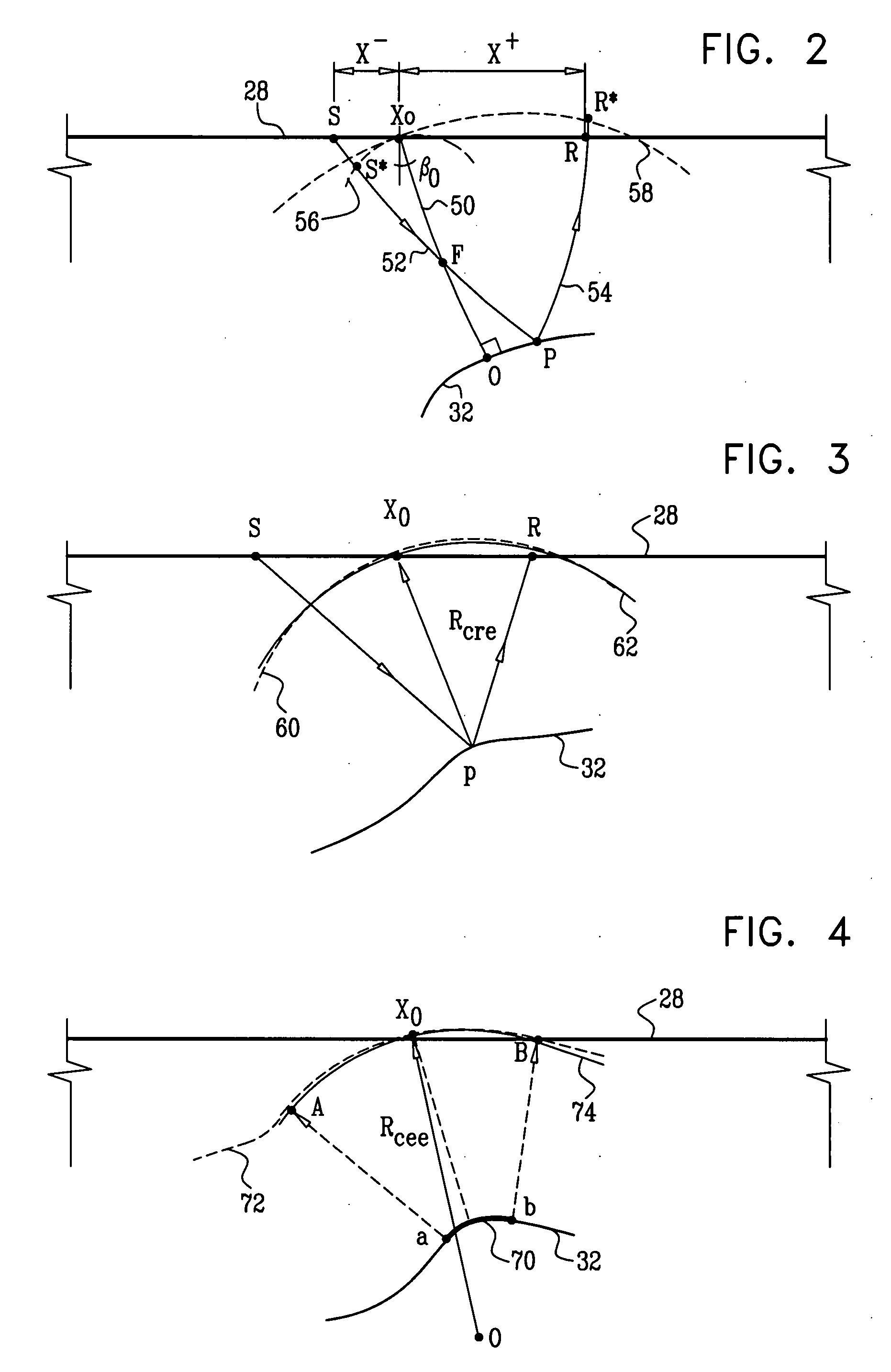Complex analysis of kinematics for non-hyperbolic moveout corrections
a kinematics and complex analysis technology, applied in the field of seismic data analysis, can solve problems such as information loss, achieve the effects of avoiding “stretching” effects, increasing signal/noise ratio, and improving accuracy and detail
- Summary
- Abstract
- Description
- Claims
- Application Information
AI Technical Summary
Benefits of technology
Problems solved by technology
Method used
Image
Examples
Embodiment Construction
[0036]FIG. 1 is a schematic, pictorial illustration of a system 20 for seismic imaging, in accordance with an embodiment of the present invention. Multiple sources 22 and receivers 24 of seismic signals are distributed at an array of locations 26 on a terrestrial surface 28 overlying a subterranean region of interest. Typically, sources 22 comprise explosive charges, which are detonated at specified times, while receivers 24 comprise seismic sensors, which generate seismogram traces indicating the amplitude of seismic waves reaching the respective locations 26 as a function of time. Although the sources and receivers are shown in FIG. 1, for the sake of simplicity, as lying along a single line (thus defining a two-dimensional acquisition geometry), system 20 typically comprises an array of sources and receivers that are distributed over an area of the terrestrial surface, and may thus use both two-dimensional and three-dimensional acquisition geometries.
[0037]For example, as shown i...
PUM
 Login to View More
Login to View More Abstract
Description
Claims
Application Information
 Login to View More
Login to View More - Generate Ideas
- Intellectual Property
- Life Sciences
- Materials
- Tech Scout
- Unparalleled Data Quality
- Higher Quality Content
- 60% Fewer Hallucinations
Browse by: Latest US Patents, China's latest patents, Technical Efficacy Thesaurus, Application Domain, Technology Topic, Popular Technical Reports.
© 2025 PatSnap. All rights reserved.Legal|Privacy policy|Modern Slavery Act Transparency Statement|Sitemap|About US| Contact US: help@patsnap.com



